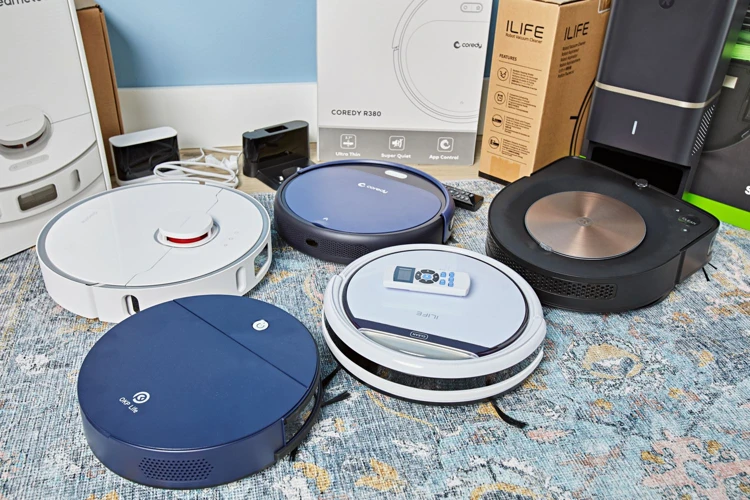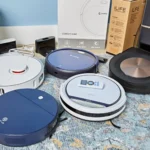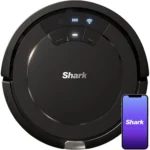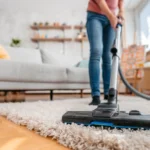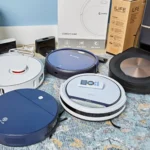Keeping our homes clean is a never-ending task, but thankfully vacuum cleaners can make this chore less daunting. With technological advancements, homeowners now have more options to choose from, such as the traditional vacuum cleaner or the newer robot vacuum cleaner. But how do you choose between the two? Cost, cleaning power, noise level, maneuverability, maintenance, accessibility, battery life, size and capacity, additional features, brand and model comparison, reviews and ratings, and warranty and customer support are all essential factors to consider when deciding which type of vacuum cleaner is best for your needs. This article will take an in-depth look at each of these factors to help you make an informed decision between traditional and robot vacuum cleaners.
Cost
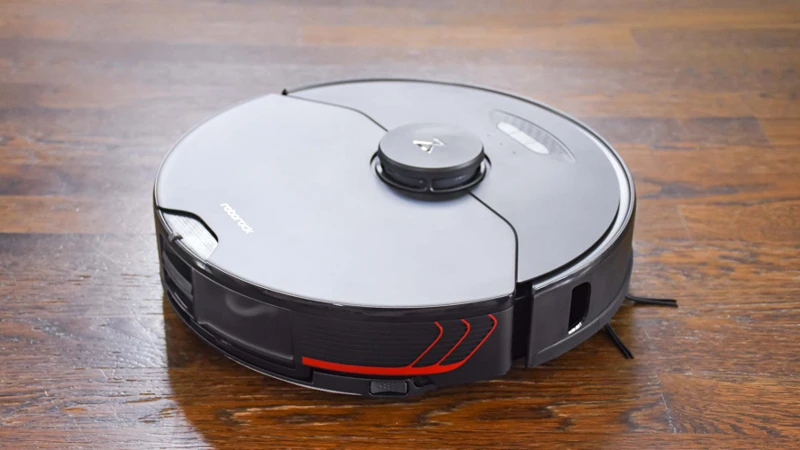
When it comes to choosing between a robot vacuum or a traditional vacuum, cost is undoubtedly a major factor to consider. While both have their own price points, it’s essential to weigh the value that each brings to the table. Robot vacuums are typically more expensive upfront, but they offer convenient and hands-free cleaning. On the other hand, traditional vacuums may have a lower initial cost, but they require more time and effort to use effectively. To get a more comprehensive understanding of the pros and cons of each option, check out our comparison between robot and traditional vacuums at /pros-cons-robot-traditional-vacuums/.
Robot Vacuums
When it comes to choosing between a robot vacuum and a traditional vacuum, there are several factors to take into consideration. First up, let’s focus on the pros and cons of robot vacuums.
Pros of Robot Vacuums:
| Advantages | Details |
|---|---|
| Hands-free cleaning | Robot vacuums operate autonomously, so you can sit back and relax while they do the work. |
| Maneuverability | Robot vacuums can maneuver around tight spaces and hard-to-reach areas, making them ideal for cleaning underneath furniture and tackling corners and edges. |
| Convenience | Robot vacuums can be programmed to clean on a schedule, meaning you don’t have to worry about vacuuming yourself or remembering to do it. |
| Noise level | Robot vacuums are generally quieter than traditional vacuums, making them ideal for those who prefer a more peaceful cleaning experience. |
Cons of Robot Vacuums:
| Disadvantages | Details |
|---|---|
| Cost | Robot vacuums can be more expensive than traditional vacuums. |
| Cleaning power | Robot vacuums may not have as much suction power as traditional vacuums, making them less effective on particularly dirty or heavily soiled floors. |
| Battery life | Robot vacuums require regular charging and may not last long enough to clean larger areas in one go. |
| Accessibility | Robot vacuums may struggle to navigate uneven surfaces, cluttered spaces, or areas with high thresholds. |
While there are certainly benefits to owning a robot vacuum, they may not be the best choice for everyone. In the next section, we’ll explore the pros and cons of traditional vacuums.
To learn more about the differences between robot and traditional vacuums, check out our robot vs traditional vacuum comparison or read our article on the efficiency battle of robot vs traditional vacuum.
Traditional Vacuums
Traditional vacuums are usually the preferred choice for individuals who prioritize cleaning power over convenience. Here are some factors to consider when choosing a traditional vacuum:
- Suction power: Traditional vacuums offer superior suction power and are therefore more efficient in picking up dirt and debris from carpets and floors. However, this is largely dependent on the model and brand of the vacuum.
- Versatility: Most traditional vacuums come with a range of attachments that can be used to clean upholstery, stairs, tight spaces and even curtains. This adds to their versatility, making them suitable for a variety of cleaning tasks.
- Cost: Traditional vacuums are generally cheaper compared to their robot counterparts. Although some high-end models can be expensive, their efficiency justifies the cost.
- Noise level: Traditional vacuums are generally louder compared to robot vacuums, which can be a nuisance to some users. However, newer models are designed with noise reduction features to mitigate this issue.
- Maneuverability: Traditional vacuums can be quite heavy and bulky, making them difficult to maneuver around tight spaces or under low furniture. However, newer models are designed with swivel heads and unique ball technology that enhance their maneuverability.
- Maintenance: Traditional vacuums are low maintenance machines that require regular cleaning and replacement of filters and dust bags. This ensures that they continue to operate efficiently and effectively.
- Accessibility: Traditional vacuums require constant supervision and intervention during cleaning. However, advanced models come with features such as cord rewind mechanisms and self-cleaning brush rolls that enhance their accessibility and user-friendliness.
In a cleaning power efficiency battle between robot and traditional vacuums, traditional vacuums have a slight edge due to their superior suction power and versatility. Nonetheless, their bulkiness and loudness can be a turn off for some users.
Cleaning Power
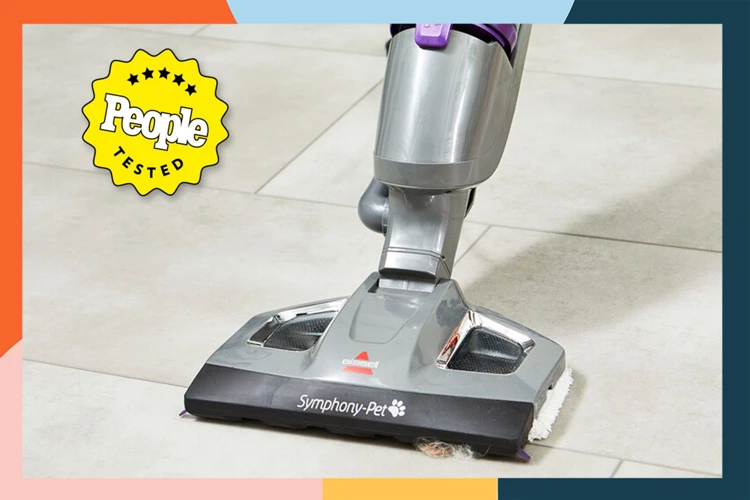
When it comes to a vacuum cleaner, the most critical factor is undoubtedly its cleaning power. While both traditional and robot vacuum cleaners are designed to pick up dirt and debris, there are significant differences in their cleaning abilities. Whether you’re dealing with pet hair, spilled snacks, or everyday dust and dirt, choosing the right vacuum cleaner is essential to maintain a clean home. Let’s examine the strengths and weaknesses of each type of vacuum cleaner in terms of their cleaning power.
Robot Vacuums
When it comes to robot vacuums, there are several factors to consider. Below is a table summarizing the pros and cons of robot vacuums in terms of cost, cleaning power, noise level, maneuverability, maintenance, accessibility, battery life, size and capacity, and additional features.
| Factors | Advantages | Disadvantages |
|---|---|---|
| Cost | Robot vacuums can be more affordable than traditional vacuums over time. | Robot vacuums have a higher initial cost than traditional vacuums. |
| Cleaning Power | Robot vacuums can clean constantly, providing a consistently clean space. | Robot vacuums may not provide as deep of a clean as traditional vacuums, especially for carpets. |
| Noise Level | Robot vacuums are generally quieter than traditional vacuums. | Robot vacuums can still be perceived as noisy, especially if they run constantly. |
| Maneuverability | Robot vacuums are capable of navigating around obstacles and tight spaces. | Robot vacuums may get stuck or have difficulty navigating certain spaces. |
| Maintenance | Robot vacuums require less maintenance than traditional vacuums. | Robot vacuums still require some maintenance, such as cleaning brushes and bins. |
| Accessibility | Robot vacuums can be controlled and scheduled remotely via smartphone apps. | Robot vacuums may be less accessible for those without smartphones or reliable internet connection. |
| Battery Life | Robot vacuums typically have a decent battery life, and can charge themselves when running low. | Robot vacuums may not have as long of a battery life as traditional vacuums, and may require multiple charges for larger spaces. |
| Size and Capacity | Robot vacuums are typically smaller and more lightweight than traditional vacuums, making them easier to store. | Robot vacuums have a smaller capacity and require more frequent emptying than traditional vacuums. |
| Additional Features | Robot vacuums can have additional features such as mapping technology, voice control, and self-emptying. | Additional features may add to the initial cost, and may not be necessary for all users. |
When considering whether to choose a robot vacuum or traditional vacuum, it is important to weigh these factors and determine which is best for your specific needs and preferences.
Traditional Vacuums
When it comes to traditional vacuums, there are several factors to consider that set them apart from their robotic counterparts.
Power: Traditional vacuums tend to be more powerful than robot vacuums, allowing for deeper cleaning of carpets and upholstery. They often come with multiple settings and attachments, such as a crevice tool and upholstery brush, to tackle various surfaces and hard-to-reach areas.
Noise: While traditional vacuums are powerful, they can also be quite noisy. The sound of the motor and suction can be disruptive to both the user and anyone in the surrounding area.
Maneuverability: Traditional vacuums can be heavy and bulky, making them difficult to maneuver around tight corners and narrow spaces. However, newer models have become more compact and lightweight, making them easier to handle.
Maintenance: Maintenance for traditional vacuums typically involves changing the bag, filter, and cleaning the brush roll. Depending on the frequency of use, these maintenance tasks can add up in cost and time.
Accessibility: While traditional vacuums require physical exertion to operate, they can reach areas that a robot vacuum may not be able to, such as stairs and high-up shelves.
Size and Capacity: Traditional vacuums come in various sizes and capacities, allowing for customization based on the user’s needs. However, larger models can be difficult to store in small living spaces.
Traditional vacuums offer powerful cleaning capabilities and the ability to tackle hard-to-reach areas. However, they can be noisy, difficult to maneuver, and require more maintenance than robot vacuums. It’s important to consider these factors when deciding between the two types of vacuums.
Noise Level
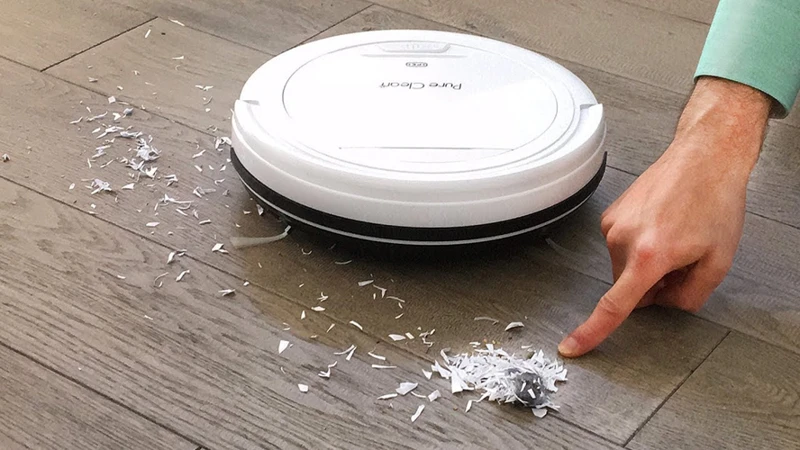
Keeping the noise level down in our households is important for many of us. Imagine being able to clean your home discreetly and without disturbing your family or neighbors. Whether you’re a light sleeper, have a baby in the house, or simply want to maintain a peaceful environment, the noise level of your vacuum cleaner can be a deciding factor when choosing between a robot and traditional vacuum cleaner. Let’s take a closer look at how each type of vacuum cleaner performs in this aspect.
Robot Vacuums
When it comes to robot vacuums, there are several factors to consider before making a purchase decision. Here are some points to keep in mind:
| Factor | Description |
|---|---|
| Cleaning Capability | Robot vacuums use suction and brushes to clean floors. They are best suited to clean small to medium-sized homes with minimal carpeting or low pile carpeting. However, they may struggle with larger debris such as pet hair or heavier dirt. |
| Noise Level | Robot vacuums are generally quieter than traditional vacuums, but they still produce some level of noise. This is typically around 60 decibels, which is similar to conversational speech. |
| Maneuverability | Robot vacuums are designed to navigate around furniture and other obstacles. They use sensors and mapping technology to move about the room without bumping into anything. However, they may struggle with tight spaces or corners. |
| Maintenance | Robot vacuums require regular maintenance in order to operate effectively. This includes emptying the dustbin, cleaning the brushes and filters, and occasionally replacing parts as needed. |
| Accessibility | Robot vacuums can be controlled and programmed using a smartphone app or a remote control. This allows for easy scheduling and customization of cleaning cycles. Some models can also be integrated with voice assistants such as Amazon Alexa or Google Assistant. |
| Battery Life | Robot vacuums typically have a battery life of around 60-120 minutes, depending on the model and usage. They will automatically return to their charging dock when the battery gets low, and then resume cleaning once the battery is fully charged. |
| Size and Capacity | Robot vacuums are generally smaller and more compact than traditional vacuums. They can easily fit in tight spaces and under furniture. However, their dustbin capacity is also smaller and may need to be emptied more frequently. |
| Additional Features | Some robot vacuums come equipped with additional features such as mapping technology, virtual boundaries, and automatic mopping capabilities. These features can make cleaning easier and more efficient. |
Robot vacuums are a great choice for those who want the convenience of automated cleaning. However, they may not be the best option for individuals with larger homes or heavy-duty cleaning needs. It’s important to weigh the pros and cons of each type of vacuum before making a purchase decision.
Traditional Vacuums
When it comes to traditional vacuums, there are several factors to consider before making a decision. Here are some pros and cons to help you decide if a traditional vacuum is the right choice for you:
| Advantages | Disadvantages | |
|---|---|---|
| Cleaning Power | Traditional vacuums typically come with a powerful motor that can handle tough cleaning tasks and heavy-duty debris, including pet hair and large debris like cereal or leaves. | The suction power of traditional vacuums can be too strong for delicate surfaces and fabrics, which may require special attachments or settings to avoid damage. |
| Noise Level | While traditional vacuums can be loud, some models come with features to reduce noise levels, such as insulated motors or noise-reducing materials | Traditional vacuums are generally louder than robot vacuums, which can be a nuisance for those with sensitive hearing or living in shared spaces like apartments. |
| Maneuverability | Traditional vacuums come in a range of sizes and designs, including upright, canister, and handheld models to suit different preferences and cleaning needs. | Some traditional vacuums can be heavy and bulky, making them difficult to maneuver around tight spaces or up stairs. |
| Maintenance | Traditional vacuums typically require frequent maintenance, such as replacing or cleaning filters, belts, and brush rolls, but these tasks can be done easily and inexpensively at home. | The maintenance tasks required for traditional vacuums can add up in time and cost, especially for models with multiple filters or parts that need replacing. |
| Accessibility | Traditional vacuums can be easily accessed and used by people of all ages and abilities, including those with mobility or vision impairments, with lightweight, cordless, or assisted models available. | For those with limited physical abilities, traditional vacuums may still require a lot of effort to use and maneuver, especially for heavier models or those with long cords. |
| Battery Life | While traditional vacuums are typically corded models that don’t require batteries, there are cordless models available with decent battery life for convenient use without the hassle of cords. | Battery-powered traditional vacuums may have limited run time and require frequent recharging, which can be a hassle for longer cleaning tasks. |
| Size and Capacity | Traditional vacuums come in a range of sizes and capacities to suit different cleaning needs, with larger models offering more powerful suction and larger dust bins for less frequently dumping. | Larger traditional vacuums can be difficult to store in smaller homes or apartments and may require a larger budget for the purchase. |
| Additional Features | Many traditional vacuums come with additional features and attachments, such as crevice tools or pet hair brushes, for customized cleaning, as well as specialized filters for allergen reduction or odor elimination. | Additional features and attachments can add to the cost of traditional vacuums, and some may not be necessary for all users. |
It is important to consider all of these factors when choosing between a robot and traditional vacuum. Traditionally, vacuums are powerful and versatile but may require more maintenance and effort to use. However, with the right model and features, they can still be a great option for keeping your home clean and tidy.
Maneuverability
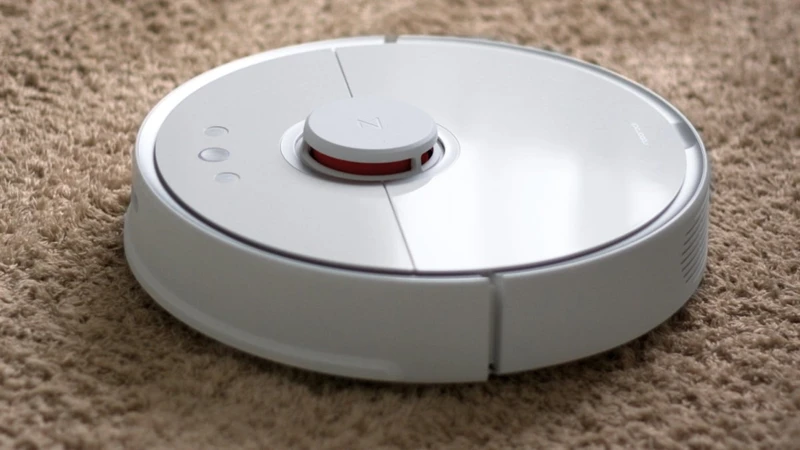
When it comes to vacuum cleaners, maneuverability plays a crucial role in making cleaning easy and efficient. The ability of a vacuum cleaner to move around obstacles and reach tight spaces can make a huge difference in the cleaning experience. With different vacuum cleaners come different levels of maneuverability. Let’s take a closer look at the factors that contribute to the maneuverability of both robot and traditional vacuum cleaners.
Robot Vacuums
When considering robot vacuums, there are several factors to keep in mind. Here are the pros and cons of this type of vacuum cleaner:
Pros:
- Convenience: Robot vacuums are incredibly convenient, as they can be set to clean on a schedule and can easily navigate tight spaces and obstacles.
- Noise Level: Robot vacuums are generally much quieter than traditional vacuums, which can be a major plus for people with sensitive hearing or who prefer a quieter cleaning experience.
- Maneuverability: These vacuums are highly maneuverable and can easily navigate around furniture and other obstacles. They are also able to clean under furniture, something which traditional vacuums may have difficulty doing.
- Maintenance: Robot vacuums typically require less maintenance than traditional vacuums. They often have self-cleaning brushes and filters that can easily be replaced when necessary.
- Accessibility: For those with mobility issues, robot vacuums can make cleaning much easier. They can be controlled via phone apps and voice assistants, and many models can be set to avoid certain areas.
- Battery Life: Most modern robot vacuums have long-lasting batteries and can clean for up to two hours without needing to be recharged.
- Additional Features: Many robot vacuums come with additional features such as mapping and room-specific cleaning options. Some can even be programmed to mop floors and clean carpets.
Cons:
- Cost: Robot vacuums can be more expensive than traditional vacuums, which may be a turn off for some buyers.
- Cleaning Power: While robot vacuums are highly convenient, they may not have quite the same cleaning power as traditional vacuums.
- Size and Capacity: Robot vacuums are typically smaller than traditional vacuums, which means that they can hold less debris and may need to be emptied more frequently.
Robot vacuums are a great choice for those who prioritize convenience and ease of use. While they may not be as powerful as traditional vacuums, they are able to offer a level of accessibility and maneuverability that many other vacuums cannot.
Traditional Vacuums
Traditional vacuums are the more commonly known and widely used type of vacuum cleaners. They are available in a variety of styles, including upright, canister, stick, and handheld models, each with its own unique set of features and functions. Here are some factors to consider when it comes to traditional vacuums:
- Cleaning power: Traditional vacuums are often more powerful than their robotic counterparts, making them better suited for deep cleaning carpets and large debris. They generally feature stronger motors and wider cleaning heads that can pick up more dirt and dust in a shorter amount of time.
- Noise level: Traditional vacuums can be quite noisy, often producing sounds of over 80 decibels. This can be disturbing for some users, especially those with young children or pets, or those who are noise-sensitive.
- Maneuverability: Depending on the model, traditional vacuums can be heavy and difficult to maneuver around furniture and tight spaces. However, newer models often feature swivel heads and flexible hoses that make it easier to clean hard-to-reach areas.
- Maintenance: Traditional vacuums require more maintenance than robotic vacuums, as they often come with replaceable bags and filters that need to be changed periodically. Additionally, the cleaning heads and brushes may need to be manually cleaned to prevent clogs and ensure optimal cleaning performance.
- Accessibility: Unlike robotic vacuums, traditional vacuums require physical effort to use, including pushing and pulling the vacuum across the floor, which may be difficult for some users, especially those with mobility issues.
- Battery life: Traditional vacuums are typically corded, which means they do not have battery life limitations. However, this also means that users are confined to a limited range of motion and may need to switch outlets frequently in order to clean large areas.
- Size and capacity: Traditional vacuums come in a variety of sizes and capacities, with larger models offering more suction power and a larger collection capacity for dust and debris.
- Additional features: Traditional vacuums may come with a variety of additional features, such as detachable hoses, crevice tools, and pet hair attachments that can make cleaning more efficient and effective.
When it comes to choosing between robot and traditional vacuums, both have their pros and cons. It ultimately comes down to personal preferences and individual needs.
Maintenance

When it comes to household appliances, maintenance is an essential factor that should not be overlooked. Both robot and traditional vacuum cleaners require maintenance, but the process may differ depending on the type of vacuum cleaner. Keeping your vacuum cleaner in top shape is essential for its longevity and efficiency. In this section, we’ll explore the maintenance aspects of both types of vacuum cleaners, highlighting the maintenance requirements and potential challenges that come with them.
Robot Vacuums
When it comes to robot vacuums, convenience and automation are the major selling points. Robot vacuums are designed to navigate around your home, avoiding obstacles and cleaning up dirt and debris along the way. Here are some key factors to consider when comparing robot vacuums to traditional vacuums:
| Factors to Consider | Robot Vacuums |
|---|---|
| Cleaning Power | Robot vacuums typically have less suction power than traditional vacuums, but some high-end models come with strong suction and brushes for deep cleaning. |
| Noise Level | Robot vacuums tend to be quieter than traditional vacuums, making them a good choice for homes with young children or pets. |
| Maneuverability | Robot vacuums are designed to navigate around furniture and other obstacles, and some models can even climb stairs. However, they may struggle with corners and tight spaces. |
| Maintenance | Robot vacuums require regular maintenance, such as emptying the dustbin and cleaning the brushes and filter. |
| Accessibility | Robot vacuums can be controlled via a mobile app or voice commands, making it easy to schedule cleaning sessions and customize the cleaning settings. |
| Battery Life | Robot vacuums typically have a battery life of 60-120 minutes, so they may not be suitable for larger homes or spaces. |
| Size and Capacity | Robot vacuums are compact and can easily fit under furniture, making them a good choice for tight spaces. However, they have a smaller dustbin capacity compared to traditional vacuums. |
| Additional Features | Some robot vacuums come with additional features such as mapping technology, room-specific cleaning, and self-emptying dustbins. |
The benefits of robot vacuums include time-saving convenience, flexibility with scheduling, improved accessibility, and lower noise levels. However, they may not be as powerful as traditional vacuums and require regular maintenance. When choosing between the two, it’s important to consider your cleaning needs and preferences.
Traditional Vacuums
When it comes to traditional vacuums, there are several factors to consider. Here’s a breakdown of some of the key things to keep in mind as you decide whether a traditional vacuum might be the right choice for your cleaning needs:
| Cleaning Power | Noise Level | Maneuverability | Maintenance | Accessibility |
|---|---|---|---|---|
| Traditional vacuums usually offer more powerful suction than their robotic counterparts. This can be especially important if you have carpets or area rugs that need frequent cleaning. | One downside of traditional vacuums is that they can be noisy, especially if you’re using a model with a powerful motor. Some models now feature noise reduction technology, but you can expect more noise from a traditional vacuum than from a robot vacuum. | Traditional vacuums tend to be heavier and bulkier than robot vacuums, which can make them more difficult to maneuver, especially in tight spaces or on stairs. However, some models come with features like swivel heads or adjustable handles to help make them easier to use. | Traditional vacuums generally require more maintenance than robot vacuums. You’ll typically need to empty the dustbin and change the filter regularly, and some models may require additional upkeep like belt replacement or brush cleaning. | While traditional vacuums can be effective at cleaning a wide range of surfaces, they may not be as accessible for people with mobility issues. These vacuums are typically heavier and require more physical effort to maneuver than robot vacuums, which can be a drawback for some users. |
Traditional vacuums are a good option for people who prioritize cleaning power and don’t mind putting in a bit more maintenance work. However, if you’re looking for something that’s easier to maneuver and doesn’t require as much physical effort, a robot vacuum might be a better choice.
Accessibility

When it comes to choosing between robot and traditional vacuum cleaners, accessibility is a crucial factor to consider. Accessibility refers to how easy it is to access hard-to-reach areas in your home. After all, what good is a vacuum cleaner if it cannot reach and clean certain spots? In this section, we will examine how both robot and traditional vacuum cleaners stack up in terms of accessibility, and highlight some of the features that make each one more or less accessible. So, let’s dive in and explore how you can ensure that your chosen vacuum cleaner can clean every nook and cranny of your home.
Robot Vacuums
Robot vacuums have gained significant popularity in recent times, and for good reasons. These vacuums are more advanced than their traditional counterparts and offer various benefits to users. Let’s take a look at the factors to consider when opting for a robot vacuum:
- Cleaning Efficiency: Robot vacuums have strong suction power that allows them to pick up dirt and debris with ease. They also come with powerful brushes that can loosen and extract dirt from carpets and hard floors.
- Noise Level: Generally, robot vacuums make less noise than traditional vacuums. They have a lower decibel rating, making them an excellent choice for people who prefer quiet cleaning.
- Maneuverability: Robot vacuums are highly maneuverable, and their small size allows them to easily access tight spaces and hard-to-reach areas. They can easily navigate around furniture and other obstacles without getting stuck.
- Maintenance: Robot vacuums require less maintenance than traditional vacuums. They usually come with washable filters and dustbins that can be easily emptied and cleaned. They do not require frequent replacement of bags and belts which can be quite expensive.
- Accessibility: Because they are automated, robot vacuums are more accessible than traditional vacuums. Users can schedule cleaning times and control the vacuum from their smartphones, making cleaning a hassle-free experience.
- Battery Life: A robot vacuum’s battery life is generally between 60-120 minutes, depending on the model. This allows enough time for it to clean an average-sized room before returning to its docking station to recharge.
- Size and Capacity: Robot vacuums are compact in size, making them easy to store when not in use, and they also have a smaller dustbin capacity which can be an issue for larger cleaning jobs.
- Additional Features: Many robot vacuums come with additional features such as mapping and navigation systems, virtual walls, and spot cleaning modes that allow them to perform targeted cleaning in specific areas.
Robot vacuums offer users ease of use, convenience, and advanced technology that traditional vacuums cannot compete with. While they may be a bit more expensive, their benefits and efficiency make them a worthwhile investment.
Traditional Vacuums
Traditional vacuums are the classic option when it comes to cleaning floors, and they still have some advantages over robot vacuums. Here are some factors to consider when deciding between a traditional vacuum:
- Cleaning Power: Traditional vacuums typically have more powerful suction than robot vacuums, making them better suited for deep cleaning carpets and removing pet hair. They also often come with attachments for cleaning upholstery and hard-to-reach areas.
- Noise Level: While traditional vacuums are generally noisier than robot vacuums, some models have been designed to reduce noise. Look for vacuums with features like insulated motors and sound-dampening materials if noise is a concern.
- Maneuverability: Traditional vacuums can be bulky and difficult to maneuver, especially in tight spaces. However, many newer models have features like swivel heads and low-profile designs that make them more maneuverable.
- Maintenance: Traditional vacuums require more maintenance than robot vacuums, as they need to be emptied and cleaned regularly. They also require regular replacement of filters and occasionally belts and brushes.
- Accessibility: Traditional vacuums require physical effort to use, as they must be pushed and maneuvered around the house. This can be a disadvantage for those who have limited mobility or strength.
- Battery Life: Traditional vacuums do not have a battery life because they are powered by electricity. However, the length of the cord can be a concern, as it may limit the range of where you can vacuum.
- Size and Capacity: Traditional vacuums come in various sizes, but they generally take up more storage space than robot vacuums. They can also have larger dustbin capacities, which means less emptying during cleaning sessions.
- Additional Features: Many traditional vacuums come with additional features like adjustable suction, height adjustment for different floor types, and multiple cleaning modes.
When deciding between a robot vacuum and a traditional vacuum, it’s important to consider these factors and choose the option that best fits your needs and lifestyle.
Battery Life
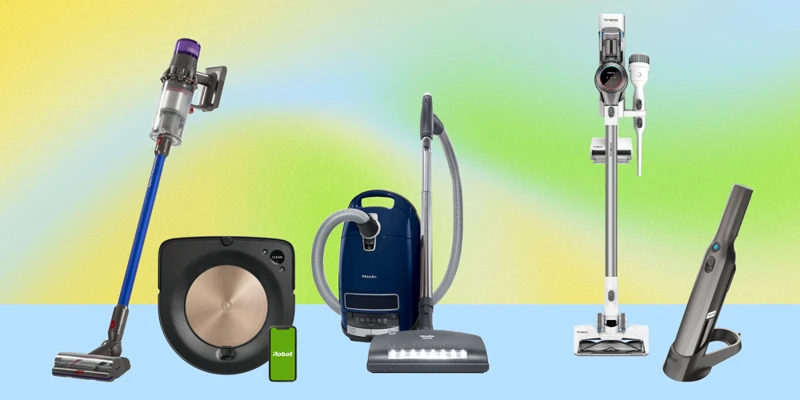
When considering whether to purchase a robotic or traditional vacuum cleaner, one important factor to keep in mind is how long the device’s battery life lasts. After all, making sure that your vacuum is able to run for a sufficient amount of time before needing a recharge is essential to maintaining a clean home. It can be perplexing to sift through the different options and specifications, but understanding the battery life of both robotic and traditional vacuums will help you make a more informed decision. So let’s dive into the details!
Robot Vacuums
When it comes to robot vacuums, there are several factors to consider. Here is a breakdown of some of the key features and considerations:
| Factor | Description |
|---|---|
| Cleaning Power | Robot vacuums typically have less suction power than traditional vacuums, making them better suited for surface cleaning rather than deep cleaning. However, some models have advanced features like multi-surface brushes and strong suction to perform well on carpeted floors as well. |
| Noise Level | Robot vacuums tend to be quieter than traditional vacuums, making them more suitable for use at night or when you have guests over. However, some models may produce a high-pitched noise that can be bothersome, so it’s important to read reviews before making a purchase. |
| Maneuverability | Robot vacuums are designed to be very maneuverable and can easily navigate around furniture and other obstacles. They also tend to have slim profiles that allow them to fit under beds and sofas to clean hard-to-reach areas. |
| Maintenance | Maintenance for robot vacuums typically involves emptying the dustbin and cleaning the brushes and filters regularly. Some models have self-cleaning features, but it’s still important to perform routine maintenance to ensure optimal performance. |
| Accessibility | Robot vacuums can be controlled via a smartphone app or remote control, making them accessible even if you’re not at home. Many models also support voice control with smart home assistants like Amazon Alexa and Google Assistant. |
| Battery Life | Battery life for robot vacuums varies depending on the model, but most can run for around 60 to 120 minutes on a single charge. Some models have longer battery life and can even recharge themselves automatically when they run out of power. |
| Size and Capacity | Robot vacuums tend to be smaller and more compact than traditional vacuums, making them easier to store in small spaces. However, this also means that the dustbin capacity is typically smaller, so you may need to empty it more frequently. |
| Additional Features | Many robot vacuums have additional features like mapping and navigation, virtual boundaries, and automatic charging. Some models also come with mopping capabilities for a more thorough clean. |
Robot vacuums are a great option for those looking for a hands-free cleaning experience. While they may not have the same level of cleaning power as traditional vacuums, they make up for it in terms of convenience and accessibility.
Traditional Vacuums
Traditional vacuums are the more traditional option when it comes to cleaning your floors. They offer a range of features that robot vacuums usually can’t, making it a great choice for people who don’t mind a little extra effort in their cleaning routine. Here are some of the important factors to consider:
- Cleaning Power: Traditional vacuums generally have a more powerful motor and better suction than most robot vacuums on the market. This means they can easily clean up dirt, debris, and pet hair from carpets and hard floors. Many traditional vacuums come with adjustable suction settings to make cleaning even easier depending on the surface type.
- Noise Level: Traditional vacuums can be quite noisy, especially if they have a high-powered motor. This can be challenging for people who are sensitive to loud sounds, have a baby in the house, or for those who want to clean while others are sleeping.
- Maneuverability: While traditional vacuums are often heavier and bulkier, they offer a greater range of motion and flexibility than most robot vacuums. Traditional vacuums are not limited by programming or technology and can clean difficult angles and tight spaces.
- Maintenance: Traditional vacuums require more maintenance than robot vacuums because they contain more parts that need to be cared for. Things like replacing bags, filters, and changing belts are necessary to keep your vacuum running smoothly.
- Accessibility: Traditional vacuums can be cumbersome and heavy. They require more physical effort to use, especially if you live in a multi-story home. Traditional vacuums also come with cords, making it necessary to clean within a certain radius of an outlet.
- Battery Life: Traditional vacuums don’t have a battery limiting their run time, but they do require an electrical outlet for power. This makes it easy to clean without worrying about battery life, but it limits your cleaning radius to the length of your power cord.
- Size and Capacity: Traditional vacuums are usually bulkier than robot vacuums, making them harder to store. However, they also have a larger capacity to hold dirt, hair, and debris, meaning you won’t have to empty them as frequently as you would a robot vacuum.
- Additional Features: Traditional vacuums come with a range of accessories that make cleaning more efficient. Attachments like crevice tools, dusting brushes, and upholstery cleaners help you handle different types of surfaces and tough-to-reach areas.
- Brand and Model Comparison: There are many different brands and models of traditional vacuums on the market, and it can be overwhelming to choose the right one for your needs. It’s important to research and compare different brands and models to make an informed decision based on your specific cleaning requirements.
- Reviews and Ratings: It’s a good idea to read reviews and ratings of different traditional vacuums before buying one. This helps you get an idea of the vacuum’s performance, durability, and user experience.
- Warranty and Customer Support: Lastly, you should consider the warranty and customer support offered by the traditional vacuum brand you choose. Look for companies that offer good customer service and support in case you encounter any issues or require repairs.
Traditional vacuums are a reliable and powerful option for cleaning your floors. However, they require more maintenance and physical effort than robot vacuums, making them better suited for people who don’t mind putting in extra effort for a deeper clean.
Size and Capacity
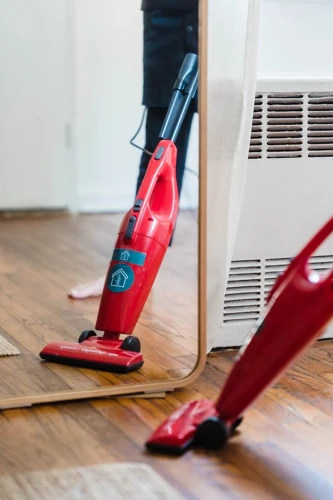
When it comes to selecting a vacuum cleaner, size and capacity play a critical role in determining its effectiveness. Vacuum cleaners are designed to pick up dirt and debris from floors and carpets, and the size and capacity of a vacuum determine how well it is able to perform that task. In this section, we’ll take a closer look at how the size and capacity of both robot and traditional vacuums impact their performance, efficiency, and overall usability. Let’s explore this important factor in more detail.
Robot Vacuums
When it comes to robot vacuums, there are several factors to consider before making a purchase. Here are some key highlights:
- Convenience: One of the biggest advantages of robot vacuums is the convenience they offer. With the ability to schedule cleaning sessions and control the device remotely, you can keep your home clean without expending any effort.
- Advanced Technology: Robot vacuums come packed with advanced features like laser navigation, app control, and voice commands. These features make cleaning sessions more efficient and enjoyable.
- Maneuverability: Robot vacuums are designed to move effortlessly around furniture and obstacles. With their slim profiles, they can reach tight spaces, including under beds and sofas, making it easy to clean every corner of the room.
- Low Noise: Robot vacuums operate quietly, making them ideal for use at night or when you have guests over. The noise level is usually around 50 to 70 decibels, which is much lower than the noise produced by traditional vacuums.
- Maintenance: Robot vacuums require minimal maintenance. You only need to empty the dustbin regularly and clean the brushes once in a while. Some models even come with self-cleaning brushes, which eliminate the need for manual cleaning altogether.
- Battery Life: Robot vacuums come with rechargeable batteries that can last anywhere from 60 to 120 minutes, depending on the model. Once the battery runs out, the device will automatically return to the charging station and resume cleaning once fully charged.
- Add-Ons: Most robot vacuums come with a range of add-ons, including virtual walls, boundary markers, and spot cleaning mode. These features allow you to customize cleaning sessions to suit your specific needs.
Robot vacuums offer a lot of benefits when it comes to convenience, technology, and maintenance. Depending on your specific needs and preferences, they may be an excellent alternative to traditional vacuums.
Traditional Vacuums
Unlike robot vacuums, traditional vacuums have been around for decades and come in a variety of different types. When weighing the benefits of traditional vacuums, there are several factors to consider.
Type
One of the first things to consider is the type of traditional vacuum you want. Some options include upright vacuums, canister vacuums, handheld vacuums, and stick vacuums. Each type has its own advantages and disadvantages, and the choice often comes down to personal preference.
Cleaning Power
Traditional vacuums typically have stronger suction power than robot vacuums, making them better equipped to tackle tough cleaning jobs. They also usually have larger dust bins and can hold more debris before needing to be emptied.
Noise Level
Traditional vacuums are often louder than robot vacuums, especially larger models like uprights and canisters. However, some newer models are designed with noise reduction technology to help minimize the disturbance.
Maneuverability
Maneuverability can vary greatly between different types of traditional vacuums. Uprights can be difficult to navigate around furniture and tight spaces, while canister vacuums tend to be more flexible. Handheld and stick vacuums offer the most mobility, but may not have the same cleaning power as larger models.
Maintenance
Traditional vacuums require more maintenance than their robotic counterparts. Filters need to be replaced regularly, and bags or dust bins must be emptied and cleaned out after each use. However, this also allows for more control over the cleaning process and ensures that the vacuum is always running at peak performance.
Accessibility
While traditional vacuums are not as hands-free as robot vacuums, they do offer more accessibility when it comes to cleaning specific areas. For example, handheld vacuums can be used to clean car interiors or furniture, while uprights and canisters can reach high places like ceilings and curtains.
Battery Life
Unlike robot vacuums, which are powered by rechargeable batteries, traditional vacuums are often powered by cords. This means that battery life is not a concern, but the length of the cord may impact maneuverability and accessibility.
Size and Capacity
The size and capacity of traditional vacuums can vary greatly depending on the type and model. Uprights and canisters tend to be larger and can hold more debris, while handheld and stick vacuums are smaller and more compact.
Additional Features
Traditional vacuums often come with additional features like attachments for cleaning upholstery or crevices, height adjustment settings for different types of flooring, and HEPA filters for trapping allergens and other particles.
Traditional vacuums offer more cleaning power and control than robot vacuums, but require more maintenance and may not be as hands-free. Consider the type of vacuum that best suits your needs and lifestyle before making a purchase.
Additional Features

As technology advances, both robot and traditional vacuum cleaners are equipped with various additional features that make cleaning easier and more efficient. These features vary from brand to brand and model to model, and it’s important to consider which ones are important for your specific cleaning needs when making a purchase. Let’s take a closer look at the different features available and what they have to offer.
Robot Vacuums
When it comes to robot vacuums, there are several factors to consider before making a purchase. Here are some of the key points to keep in mind:
- Convenience: Robot vacuums are incredibly convenient as they can automatically clean your floors without requiring any input from you. You can even schedule them to run at specific times, so you don’t have to worry about cleaning yourself.
- Size: Robot vacuums are typically small and compact, making them easy to store and maneuver around your home. They can also fit into tight spaces that traditional vacuums may not be able to reach.
- Navigation: Robot vacuums typically use sensors to navigate around your home, avoiding obstacles and finding the most efficient cleaning route. Some high-end models even use advanced mapping technology to learn the layout of your home and optimize their cleaning accordingly.
- Noise Level: Robot vacuums tend to be quieter than traditional vacuums, making them a great option for people who want to clean their home without disturbing others.
- Battery Life: Since robot vacuums are powered by batteries, it’s important to consider their battery life before making a purchase. High-end models typically have longer battery life and can clean for extended periods of time.
- Maintenance: Robot vacuums require some maintenance, such as emptying the dustbin and cleaning the brushes. However, this is often less involved than maintaining a traditional vacuum.
- Cleaning Power: While robot vacuums may not have the same suction power as traditional vacuums, they can still clean your floors effectively. Some models even have specialized brushes and suction to clean pet hair and other debris.
- Addition Features: Robot vacuums have advanced features like app connectivity, voice control, mopping, and more. Always consider what extra features would be useful for you.
Considering these factors will help you determine if a robot vacuum is right for you and which model would be the best fit for your home. Always remember to read reviews and ratings to ensure you are making an informed purchase.
Traditional Vacuums
Traditional vacuums have been around for a long time and are the most commonly used type of vacuum cleaners. When choosing between robot and traditional vacuum cleaners, there are several factors to consider. Here’s a detailed breakdown of traditional vacuums and what they have to offer.
| Cleaning Power | Traditional vacuums have powerful suction and are more effective in cleaning heavy-duty messes, such as pet hair, dirt, and debris. |
|---|---|
| Noise Level | Traditional vacuums tend to be noisier than robot vacuums, which could be a problem if you have little ones or pets in your household. |
| Maneuverability | Traditional vacuums can be bulky and difficult to maneuver around furniture and tight spaces, making them less ideal for cleaning in small spaces and corners. |
| Maintenance | Traditional vacuums require more maintenance than robot vacuums, including the need to change bags, filters, and belts over time. |
| Accessibility | Traditional vacuums require more physical effort to operate as they need to be pushed around, which could be a challenge for elderly or disabled individuals. |
| Battery Life | Traditional vacuums don’t rely on batteries and typically have unlimited run times as long as they’re plugged in, making them a better option for long cleaning sessions. |
| Size and Capacity | Traditional vacuums come in various sizes and capacities, allowing you to choose a model that suits your needs best. However, larger models can take up more storage space. |
| Additional Features | Traditional vacuums may come with additional features such as adjustable suction, attachments for cleaning stairs or upholstery, and HEPA filters for allergy sufferers. |
| Brand and Model Comparison | With many brands and models to choose from, you’ll need to compare prices, features, and customer reviews to determine which traditional vacuum is right for you. |
| Reviews and Ratings | Online reviews and ratings can help you get a better idea of the overall performance, reliability, and customer satisfaction of a traditional vacuum. |
| Warranty and Customer Support | Make sure to choose a traditional vacuum with a warranty and reliable customer support in case you have any issues or concerns with your purchase. |
Traditional vacuums offer powerful cleaning capabilities and a variety of features, but they may require more maintenance, be less maneuverable, and produce more noise than robot vacuums. It’s important to carefully consider your needs and preferences before making a final decision.
Brand and Model Comparison
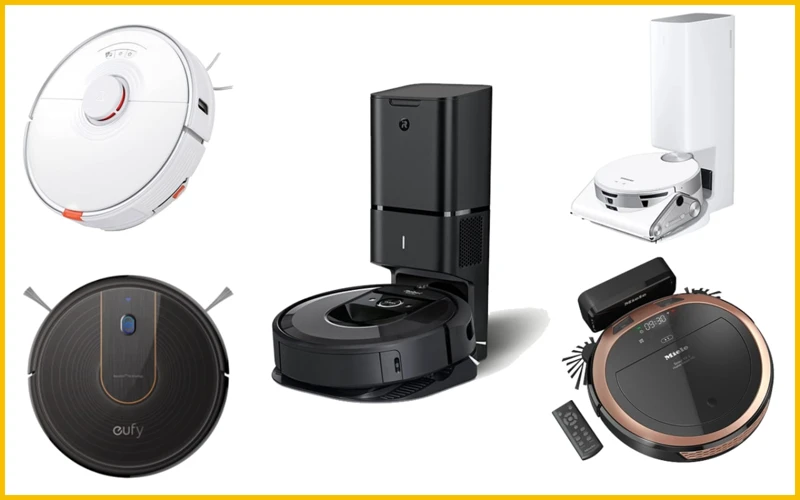
When it comes to choosing between robot and traditional vacuum cleaners, the brand and model you select can have a significant impact on your cleaning experience. Several brands offer both types of vacuum cleaners, and it’s essential to consider the reputation and popularity of each brand before making your purchase.
Robot Vacuums: The market for robot vacuums is growing at a rapid pace, and there are numerous brands to choose from – some well-known, and others less so. Two well-recognized brands of robot vacuums are iRobot and Ecovacs. Both brands have a reputation for producing high-quality products that deliver efficient cleaning results. However, models like Roomba and DEEBOT respectively are expensive and may not fit within everyone’s budget, so it’s crucial to compare different models and consider your requirements before selecting one.
Traditional Vacuums: Traditional vacuum cleaners have been around for a long time, and there are several well-known brands in the market. Dyson and Shark, for instance, are known for their powerful suction, versatile attachments, and bagless technology. Bissell, on the other hand, has a reputation for producing affordable, reliable, and efficient vacuum cleaners. Brands like Hoover, Kenmore, and Dirt Devil are also popular among consumers and worth considering.
Comparing Brands and Models: When comparing brands and models, it’s vital to consider your preferences and requirements. For instance, if you’re looking for a robot vacuum that can handle pet hair or you live in a house with multiple floors, models like Roomba or DEEBOT with advanced features would be ideal. Whereas, for traditional vacuums, brands like Dyson and Shark offer advanced filtration technology, powerful suction, and removable canisters, making them easier to clean. Bissell’s affordable machines are a great choice for people who are on a tight budget.
Once you have identified your preferences, you should read reviews from other consumers who have purchased the same models or brands. Check for common complaints or problems that people have experienced with the vacuum cleaners you’re considering. Doing this can help you get a better idea of the performance and reliability of the vacuum cleaner.
Choosing the right brand and model is crucial when it comes to purchasing a vacuum cleaner. It’s essential to consider factors such as cost, cleaning power, noise level, maneuverability, maintenance, accessibility, battery life, and size and capacity before making your purchase. A careful comparison of brands and models can help you to choose the right vacuum cleaner that will meet your needs and make cleaning easier and more efficient.
Reviews and Ratings
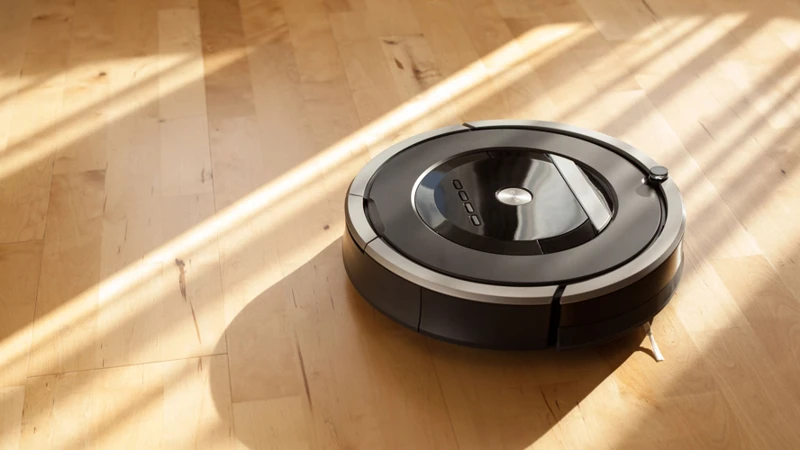
When it comes to purchasing a vacuum cleaner, one of the most important factors to consider is what others have to say about the product. Reviews and ratings from other users can provide valuable insights into the performance, reliability, and overall satisfaction of the vacuum cleaner.
Robot Vacuums: Online marketplaces like Amazon and Best Buy allow users to leave reviews and ratings on robot vacuum cleaners. Make sure to read through both the positive and negative reviews to get a balanced understanding of the product. Look out for common complaints or problems that are mentioned repeatedly to ensure that you don’t end up with a dud.
Traditional Vacuums: The internet is awash with consumer ratings and reviews for traditional vacuums, from popular models like Dyson and Shark to affordable options like Bissell and Eureka. Many department stores and home appliance retailers also offer customer ratings and reviews, which can be valuable in helping you make an informed decision.
When evaluating reviews and ratings, pay attention to the overall score as well as the specific comments left by users. A product with a high rating but a number of negative comments may not be the best choice for your needs. Conversely, a product with a lower rating but positive reviews may be worth considering if it meets your requirements.
Additionally, look for reviews and ratings from sources that you trust. Consumer psychology studies have revealed that online reviews can be subject to manipulation and fake ratings can mislead users. Reputable and verified reviews and ratings from publishers like Consumer Reports and Good Housekeeping can help ensure that you’re making an informed decision.
Reviews and ratings are a critical part of the decision-making process when choosing between robot and traditional vacuum cleaners. Don’t underestimate their importance, as they can provide valuable insights and help you make the right choice.
Warranty and Customer Support
When choosing between robot and traditional vacuum cleaners, it is important to consider the warranty and customer support that come with the product. The warranty is a guarantee that the manufacturer will fix any issues that arise with the vacuum cleaner during a certain period of time, usually one to two years. While the length of the warranty period is important to consider, it is also important to look at what the warranty covers.
With traditional vacuum cleaners, warranties may cover the motor, brush roll, or other specific parts. However, with robot vacuum cleaners, the warranties may cover the entire machine. It’s important to read the warranty information carefully to understand what is and isn’t covered.
Additionally, when it comes to customer support, it is important to ensure that the company provides good customer service. This may include having a phone or chat support available to answer any questions or concerns that arise with the product. It is also important to know if the company provides any instructional materials or online resources to help with troubleshooting or maintenance of the vacuum cleaner.
If an issue does arise with the vacuum cleaner, the quality of customer support can make a big difference in the overall experience. A company with good customer support can provide prompt and helpful solutions to any issues, making the process less frustrating for the customer.
In terms of warranty and customer support, it is also important to consider the reputation of the brand. A company with a good reputation for standing behind their products and providing excellent customer service is more likely to provide a satisfactory experience for the customer.
The warranty and customer support are important factors to consider when choosing between robot and traditional vacuum cleaners. Make sure to read the warranty information, research the quality of customer support, and consider the reputation of the brand before making a final decision.
Conclusion
After carefully considering all of the factors, it’s clear that the decision between a robot vacuum and a traditional vacuum comes down to personal preference and specific needs.
Cost is often a determining factor for many individuals. Robot vacuums typically come with a higher upfront cost, but the convenience they provide may be worth the investment. Meanwhile, traditional vacuums generally have a lower initial cost, but may require more frequent maintenance and replacement of parts.
Cleaning power is another significant aspect to consider. While robot vacuums may not have as powerful suction as traditional vacuums, their ability to clean on a consistent basis may outweigh this disadvantage for some individuals. On the other hand, traditional vacuums may provide a deeper clean for carpets and upholstery.
Noise level is an important consideration, particularly for those who prioritize peace and quiet or have young children or pets. Robot vacuums tend to be quieter than traditional vacuums, which can make them a more practical choice for households with noise sensitivities.
Maneuverability is another factor to consider, particularly for individuals with mobility issues. Robot vacuums are designed to navigate around obstacles and can access tight spaces with ease, while traditional vacuums may require more physical effort to maneuver.
Maintenance is an ongoing task for any household appliance. Robot vacuums require more frequent emptying of the dustbin and cleaning of brushes, while traditional vacuums require regular replacement of bags and filters.
Accessibility is another area where robot vacuums excel. Individuals with physical disabilities or limitations may find robot vacuums easier to use than traditional vacuums due to their self-sufficient nature.
Battery life is an important consideration for robot vacuums, as they rely on a rechargeable battery to operate. While the average battery life for robot vacuums is around 90 minutes, some models may offer longer or shorter battery life depending on usage.
Size and capacity is another important factor. Robot vacuums tend to be smaller and more compact than traditional vacuums, which can be an advantage for small spaces or homes with limited storage. However, this smaller size may limit the amount of debris the vacuum can hold.
Additional features offered by robot vacuums, such as scheduling and automatic docking, may be appealing to those seeking convenience and time-saving measures. However, traditional vacuums may offer additional attachments and accessories for a more versatile cleaning experience.
Considering all of these factors, it’s ultimately up to each individual to determine which type of vacuum best suits their needs and preferences. We recommend conducting further research on specific brands and models, reading reviews and ratings, and considering warranty and customer support before making a final decision.
Frequently Asked Questions
Can robot vacuums effectively clean carpets?
Yes, many robot vacuums have powerful suction and rotating brushes that effectively clean carpets.
Can traditional vacuums clean corners and edges better than robot vacuums?
Yes, traditional vacuums typically have attachments designed to clean corners, edges and hard-to-reach spots that robot vacuums may struggle with.
Do robot vacuums work on all types of flooring?
Most robot vacuums work on all types of flooring, including carpets, hardwood, tile and laminate. However, some may not perform as well on thicker carpets or uneven surfaces.
How often should I replace the filter on my robot vacuum?
It depends on how frequently you use the vacuum and the manufacturer’s recommendations. Generally, it’s recommended to replace the filter every three to six months.
Are traditional vacuums louder than robot vacuums?
Yes, traditional vacuums tend to be louder due to their motor and size. Robot vacuums are designed to be quieter, but some can still produce a noticeable noise.
Do robot vacuums require a lot of maintenance?
Robot vacuums require regular cleaning and maintenance, such as emptying the dustbin and cleaning the brushes. However, they generally require less maintenance than traditional vacuums.
Can I control my robot vacuum with my smartphone?
Many robot vacuums offer smartphone connectivity, allowing you to control and schedule the vacuum from your phone.
What additional features should I look for in a traditional vacuum?
Additional features to look for in a traditional vacuum include adjustable suction, height settings, and attachments for different surfaces and cleaning needs.
Are robot vacuums more expensive than traditional vacuums?
Robot vacuums can be more expensive than traditional vacuums, but it depends on the brand and model. Some higher-end traditional vacuums can also be quite expensive.
What should I do if my robot vacuum stops working?
Refer to the manufacturer’s instructions and troubleshooting guide. If the issue persists, contact customer support for further assistance or warranty information.
